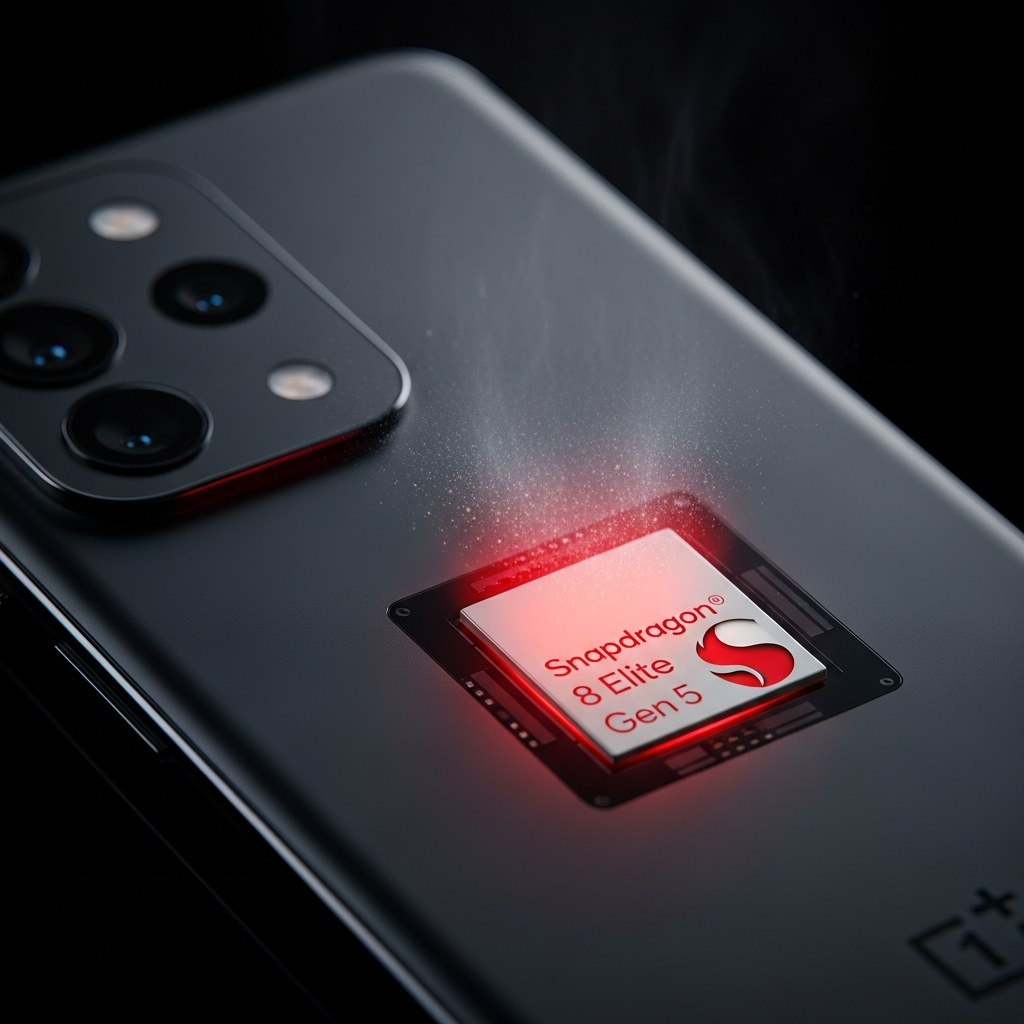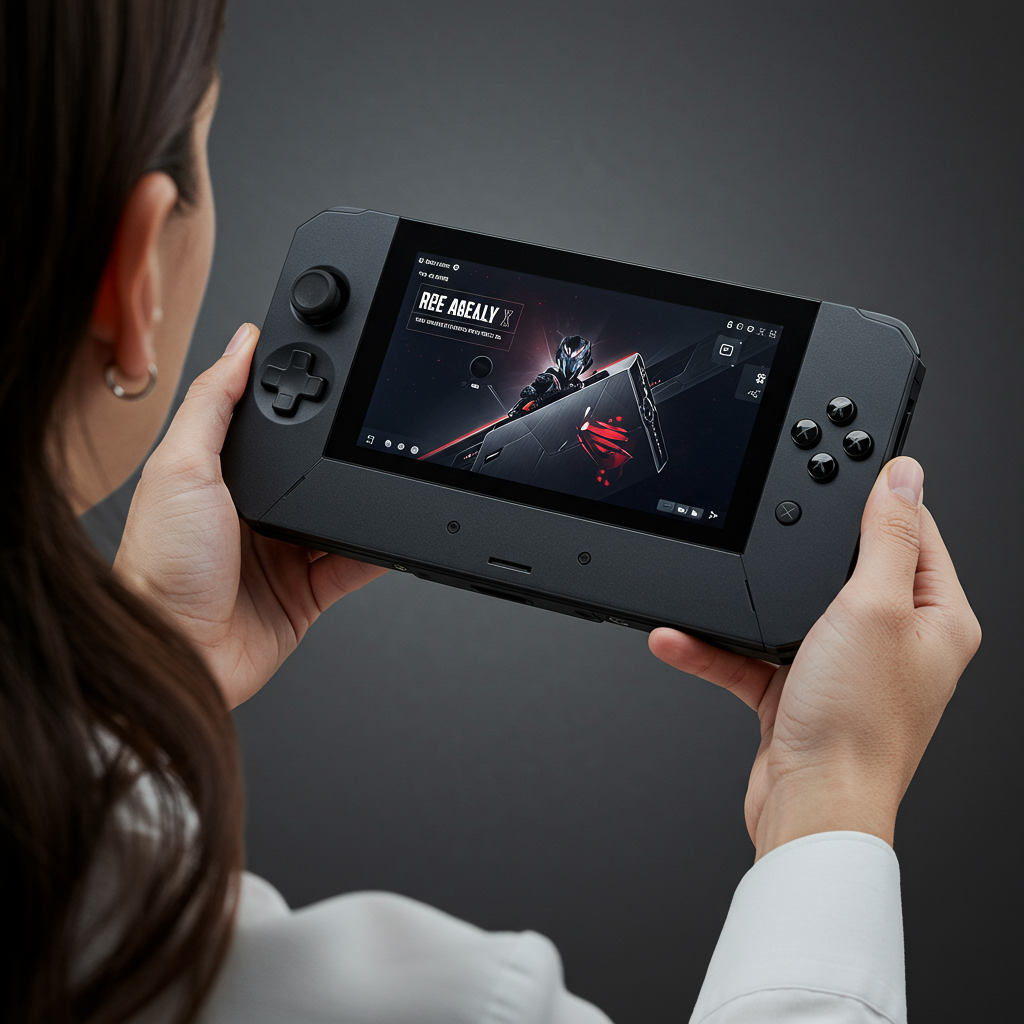The smartphone landscape is constantly pushing boundaries, with new flagship processors promising unparalleled power. Qualcomm’s latest Snapdragon 8 Elite Gen 5 chip is at the forefront of this race. However, early reviews reveal a significant challenge for one of its prominent adopters: the new OnePlus 15. Our in-depth testing indicates that while the phone boasts raw power, its thermal management struggles under pressure, leading to performance throttling and even shutdowns. This article delves into the benchmarks, real-world implications, and broader market context surrounding the OnePlus 15’s performance.
Benchmark Blazes: A Fiery Performance Test
Our lab tests on the OnePlus 15, equipped with the cutting-edge Snapdragon 8 Elite Gen 5, presented a mixed bag of results. Initial CPU benchmarks, such as GeekBench 6, showed promising figures. The phone’s Oryon CPU cores performed on par with other Snapdragon 8 Elite Gen 5 devices. They even marginally outpaced Google’s Tensor G5 and the Arm C1-Ultra cores found in the OPPO Find X9 Pro, solidifying its position as a high-performing CPU for everyday tasks.
However, the picture changed drastically when we subjected the device to graphics-intensive workloads. During prolonged 3DMark stress tests, designed to push GPUs to their limits, the OnePlus 15 exhibited severe thermal issues. The device repeatedly failed to complete the benchmarks, shutting down about two-thirds of the way through due. After these failures, the phone restricted app usage, only allowing calls and messages until it cooled down. We recorded a scorching surface temperature of 52.7°C (127°F), which is far too hot for comfortable handheld use and indicates even higher internal temperatures.
This performance stands in contrast to other Snapdragon 8 Elite Gen 5 handsets we’ve tested. The gaming-focused REDMAGIC 11 Pro, for instance, excelled thanks to its active fan and liquid cooling system. Even the realme GT8 Pro, while running hot and extensively throttling, managed to complete these demanding tests. Furthermore, when single 3DMark benchmarks did complete, the OnePlus 15 still lagged, performing 9% to 17% worse than other 8 Elite Gen 5 phones. Its Arm G1-Ultra GPU was also outperformed by the MediaTek Dimensity 9500’s GPU (as seen in the OPPO Find X9 Pro) by 15% to 18% in Wild Life Extreme and Solar Bay tests, a truly eyebrow-raising finding.
The OnePlus Argument and Expert Critique
A OnePlus spokesperson attributed the thermal ceiling to the Snapdragon 8 Elite Gen 5’s peak performance during “prolonged, all-out workloads.” They asserted that “everyday use” and “heavy-duty gaming” operate within normal thermal limits, with refinements to the thermal curve still in progress.
While 3DMark stress tests can indeed be more demanding than typical daily usage, this explanation doesn’t fully hold water. The OnePlus 15 struggled with “somewhat old” 3DMark tests. More critically, real-world tasks like classic game emulation can heavily stress both CPU and GPU components for extended periods, demanding sustained performance that the OnePlus 15 appears unable to deliver. If it falters in these benchmarks, it’s unlikely to handle intensive emulators or future graphically demanding games for long sessions.
A Flagship’s Confusing Downgrade
Beyond thermal performance, the OnePlus 15 presents a curious case as a flagship. Released as a follow-up to the “basically flawless” OnePlus 13, it has been described as a “confusing downgrade.” While it boasts incredible battery life and improved durability, these strengths are overshadowed by several design and hardware compromises.
The phone’s design, though mature and durable with its micro-arc oxidation treated aluminum frame and fiberglass back, has been criticized for lacking the unique character of its predecessor. It features a new squared camera configuration, reminiscent of the iPhone 16 Pro, and departs from the iconic alert slider, replacing it with a “Plus Key.” The 6.78-inch AMOLED display, while offering an impressive 165Hz refresh rate, saw a resolution downgrade from the OnePlus 13’s 2K to 1.5K. Thin LIPO bezels and robust IP68, IP66, IP69, and IP69K durability ratings are certainly positives. However, these feel less compelling when core user experience elements are compromised.
The Battery & Charging Paradox
One area where the OnePlus 15 undeniably shines is battery life. It packs a massive 7,300mAh silicon-carbon battery, a significant leap from the OnePlus 13’s 6,000mAh cell. This translates to exceptional longevity, with the phone consistently ranking among the best Android devices for battery endurance. It offers well over a full day of heavy use.
Charging is equally impressive. The included 80W SuperVOOC charger delivers “blisteringly fast” top-ups, reaching 100% only marginally slower than the OnePlus 13, despite the larger capacity. This comfortably beats competitors like Samsung and Apple. Additionally, it supports 50W AirVOOC wireless charging with proprietary magnetic chargers. This stellar battery performance creates a paradox: a phone with incredible endurance that can’t sustain its peak processing power.
Software & Long-Term Support Concerns
Running Oxygen OS 16, the OnePlus 15 introduces new AI features like “Mind Space,” a journaling tool, and “AI Portrait Glow” for photo enhancements. However, the software experience feels “heavier” and more aligned with OPPO’s interface than the streamlined OxygenOS many OnePlus fans appreciate.
A significant point of contention for potential buyers is OnePlus’s “sub-flagship” software update commitment. The company promises only four years of major Android version updates and six years of security patches. This falls short of competitors like Samsung and Google, who now offer seven years of support, undermining the long-term value of a premium device. This shorter support cycle, combined with performance inconsistencies, makes it a harder recommendation for users seeking a future-proof investment.
The Snapdragon 8 Elite Gen 5’s Broader Thermal Challenge
The thermal struggles of the OnePlus 15 may also hint at a broader challenge with the Snapdragon 8 Elite Gen 5 itself. Last year’s Snapdragon Elite chipsets also saw some smartphones grapple with heat management. As performance notches up with each generation, maintaining efficient cooling within sleek mobile form factors becomes increasingly difficult. While OnePlus’s specific thermal design (or lack thereof) appears to be a major factor, Qualcomm likely shares some responsibility if its Adreno GPU struggles to run at peak potential without extreme cooling solutions.
The rumored “OnePlus Turbo,” an upcoming gaming-focused device from the brand, is expected to feature a “Glacier Cooling System” and a colossal 8,000mAh battery. This indicates that OnePlus is aware of the need for advanced thermal solutions for high-performance chips, making the OnePlus 15’s overheating issues even more perplexing in comparison. The hope is that future chip developments, particularly the anticipated move to a 2nm process, will prioritize efficiency and energy savings over raw performance gains.
Who Should (and Shouldn’t) Buy the OnePlus 15?
For the average user engaging in everyday tasks like browsing, social media, and light photography, the OnePlus 15 will likely perform flawlessly without overheating. Its excellent display, premium build, and phenomenal battery life make it a capable daily driver.
However, for heavy gamers, emulator enthusiasts, or power users who demand sustained peak performance for intensive applications, the OnePlus 15 is a difficult recommendation. Its documented tendency to overheat and shut down during stress tests, coupled with a performance deficit against competitors even when cool, means it simply can’t fulfill the promise of its powerful Snapdragon 8 Elite Gen 5 chipset for these demanding workloads. Consumers seeking a true mobile gaming powerhouse or a device for consistent, high-intensity use should seriously consider alternatives like the REDMAGIC 11 Pro or other flagships with proven thermal management.
Frequently Asked Questions
Why is the OnePlus 15 struggling with overheating during benchmarks?
The OnePlus 15 encounters severe overheating due to its thermal management system failing to adequately cool the powerful Snapdragon 8 Elite Gen 5 processor, particularly during sustained graphics-intensive workloads. Our tests recorded surface temperatures of 52.7°C, leading the phone to shut down benchmarks and restrict app usage until it cooled. This suggests either insufficient cooling hardware or an aggressive power profile that pushes the chip beyond its thermal limits within the phone’s design, unlike some competitors with dedicated cooling.
How does the OnePlus 15’s overall value compare to the OnePlus 13 or other flagships?
The OnePlus 15, despite its incredible battery life and improved durability, is largely considered a “confusing downgrade” from the “flawless” OnePlus 13. It features significantly downgraded cameras, a lower-resolution display (1.5K vs 2K), and less engaging design. While its CPU performance is strong, the critical overheating issues under load and a subpar software update policy (4 years OS, 6 years security) make it less competitive than other flagships like the Samsung Galaxy S25 Ultra or Pixel 10 Pro/XL, which offer superior camera performance, refined software, and longer-term support.
Is the OnePlus 15 suitable for serious mobile gaming or demanding applications?
Based on our extensive testing, the OnePlus 15 is not ideally suited for serious mobile gaming or demanding, sustained applications. While it can handle everyday tasks and lighter games without issue, its repeated failures during 3DMark stress tests and significant performance throttling indicate it cannot maintain peak performance for extended periods. Heavy gamers, emulator fans, or users who rely on their phones for graphically intensive tasks risk frequent overheating, performance drops, and even app shutdowns, making it a frustrating experience compared to alternatives with robust cooling.
Conclusion
The OnePlus 15 arrives as a compelling device on paper, boasting Qualcomm’s latest Snapdragon 8 Elite Gen 5 chip, an outstanding battery, and robust durability. However, its promise is ultimately undermined by critical thermal management issues that severely limit its ability to utilize this raw power. While it might suffice for casual users, its tendency to overheat and underperform in stress tests, coupled with design compromises and a shorter software support window compared to rivals, positions it as a flawed flagship. Until OnePlus addresses these thermal challenges, power users and mobile gamers should explore more thermally stable alternatives to truly unlock the potential of a next-generation processor.




